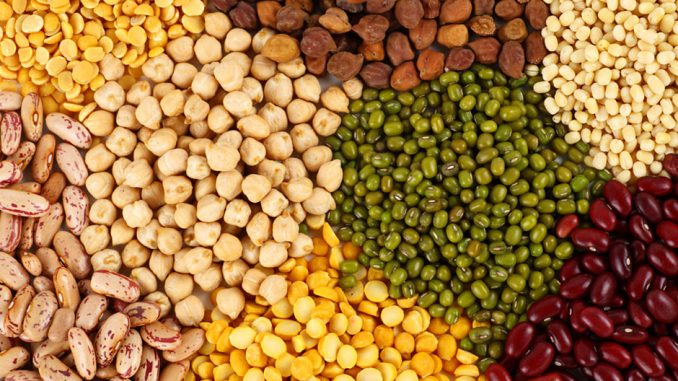
By Ajit Ranade
Export restrictions must go. Monopoly procurement must go. Essential Commodities Act restrictions must go. Arbitrary stocking limits must go
The story of pulses from last year is a stark illustration of what ails agriculture policy. India is the world’s largest producer, consumer and importer of pulses. That may sound contradictory, but isn’t, because domestic production is unable to meet the large and growing domestic demand.
Last year, India’s production was 23 million tonnes (MT), the highest ever, 40% more than the previous year. This was owing to good rains, higher minimum support price (MSP) and higher acreage. High production should have meant lower imports. No such luck. Last year’s imports were at an all-time high of 6.6 MT, that too at zero import duty. This caused prices to crash, in some places to half of the MSP. Farmers faced ruin. In barely 18 months, the price of tur dal has gone down from Rs200 to Rs30 a kilo. In its desperation, the government initiated an unprecedented procurement of pulses, and bought 1.6 MT to support prices. That didn’t help because of the glut; besides, the government was running out of storage and fiscal space. Due to the misfortune of pulses prices this year, we can be sure that its acreage will fall drastically, and we may have a shortage and high prices next year.
So what are the policy lessons? Firstly, there is no instrument for using future price information. Farmers plant crops based on anticipated future prices, not past prices. If futures trading in pulses was allowed, it may have helped in reducing volatility, and garnering some benefits for farmers.
Secondly, there are arbitrary stock limits for private traders, which can inhibit inter-period smoothening of prices. In the absence of futures trading, the volatility in tur, urad, moong and chana has been as high as 48, 54, 72, and 28%, respectively, since July.
Thirdly, for the past 10 years, all exports of pulses have been banned. This was presumably for food security and price stability. But this export ban has hurt farmers, who couldn’t take advantage of high prices. It got worse, because when prices did shoot up, the government panicked and started importing at zero duty. The imports didn’t stop despite a record harvest. When prices of food crops go up, the Central government swings into action, clamping down on exports, bringing in zero-duty imports, imposing stocking and storage limits, and so on. But when the opposite happens, that is when prices crash, often, there is no corresponding reverse rescue. This is an example of the inherent urban bias in India’s agriculture policy, which persists to this day. Indeed, among all World Trade Organization members, India is among a handful of countries with negative protection of agriculture.
Lastly, one more policy lesson is that pulses continue to be in the Agriculture Produce Marketing Committee (APMC) Act. Thus farmers are not free to sell to any buyer they wish but must go through the APMC.
Pulses are an important source of protein in India. Almost one-fifth of total acreage is used to grow them. They are also an important source of soil fertility since they provide nitrogen through fixation. Indeed, a pulses plant is called a mini fertilizer factory. Pulses were part of the six technology missions created in the 1980s (they were added to the oilseeds mission), to greatly enhance their production, use of technology and processing. But despite the mission-mode approach, India is still not self-sufficient in pulses production. And farmers continue to be at the mercy of nature, markets, pests and government policies.
The story of pulses is repeated across various crops. In cashew, India’s Kollam used to be the world’s capital, but has lost out to Vietnam due to its failure to adopt technology and due to excessive government control. India pioneered the Green Revolution, but scores very poorly in the global hunger index. The monolithic nationwide policies of promoting and procuring wheat and rice have ultimately proved harmful to health, nutrition and environment (through soil salinity). Coarse cereals, the staple of most rural folk, were largely ignored by the public distribution system, and are only now being introduced in the midday meal schemes.
Agriculture is an arena where policy-induced distortion is the rule, not an exception. For instance, the maze of subsidies in credit, inputs, outputs, water and electricity is a patchwork to act as an antidote to various price and quantity controls, which have an urban/consumer/anti-farm bias. Even policies like prohibition of foreign direct investment in retail hurt the farmer. Farm distress is chronic, and occasionally manifests in its most acute form as farmer suicides. Loan waiver to farmers is yet another reaction to policy-induced indebtedness, which has much deeper roots.
The second death anniversary of the visionary farmer leader Sharad Joshi should be a timely reminder that agriculture needs to be unshackled. Export restrictions must go. Monopoly procurement must go. Essential Commodities Act restrictions must go. Arbitrary stocking limits must go. Compulsory sale through the APMC must go. Prohibition on money-lending to farmers, tenancy farming, land leasing, land transfers, all must go (with reasonable and appropriate safeguards). We also need a comprehensive, well-designed crop and price insurance market for farmers. As Joshi’s famous slogan summarized, the farmer just wants to be left alone, to be unshackled from the government, to earn a decent living from his free enterprise, or to leave farming.
Ajit Ranade is chief economist at Aditya Birla Group.
Source: Livemint

Leave a Reply